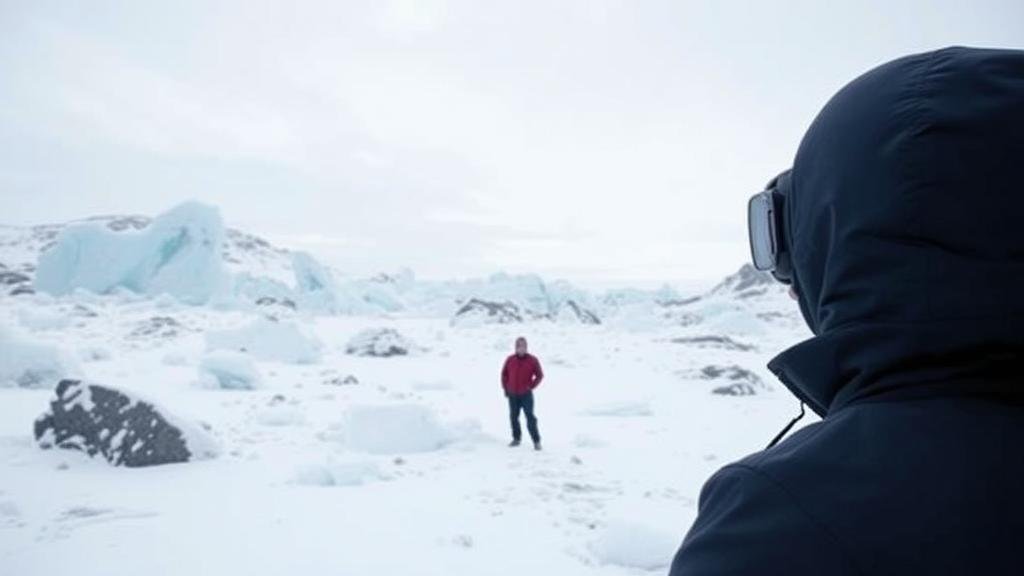Investigating the “Singing Icefields” of Antarctica, where the wind creates haunting melodies.
Investigating the Singing Icefields of Antarctica
Antarctica, a land of extremes, is home to many wonders, including the enigmatic Singing Icefields. These unique ice formations produce ethereal sounds that have captivated researchers and adventurers alike. The eerie melodies are the result of complex interactions between the wind and the icy landscape. This article delves into the science behind these haunting sounds, their implications, and real-world observations of this natural phenomenon.
The Science Behind the Sound
The Singing Icefields are primarily located on the Antarctic plateau, particularly around areas like East Antarctica. phenomenon occurs when strong winds pass over irregular ice surfaces, causing vibrations that produce acoustic waves. These vibrations can range from low rumbles to high-pitched whines, depending on various factors such as wind speed, ice texture, and temperature.
According to a study by the American Physical Society published in July 2020, the sounds can be explained through the principles of acoustics and material sciences, integrating theories of resonance and wave propagation. When wind blows at speeds over 25 mph, it stimulates the ice crystals, creating a symphony of sounds that some liken to musical notes.
Historical Perspectives
The phenomenon of singing ice has not gone unnoticed throughout history. Early explorers documented the haunting sounds of Antarctica when they first ventured into the region in the early 20th century. Sir Ernest Shackleton, during his famous expedition (1914-1917), reported hearing unusual sounds from the glaciers, which he attributed to the movement of the ice rather than wind.
More recent expeditions, such as the International Polar Year (2007-2008) and ongoing studies by organizations like the British Antarctic Survey, have provided detailed observation and analysis. In 2019, scientists utilized advanced acoustic monitoring technology to quantify and analyze these wind-generated sounds, providing a clearer understanding of the environmental conditions necessary for the singing to occur.
The Significance of the Singing Icefields
Understanding the Singing Icefields extends beyond mere curiosity; it has critical implications for climate science and environmental monitoring. Here are some key points outlining its significance:
- Climate Indicators: The behaviors and sounds of the icefields can serve as indicators of climate shifts. Changes in acoustic properties may signify melting ice or alterations in the ice structure.
- Environmental Monitoring: Researchers can use sound as a non-invasive method to monitor ice stability and the effects of global warming. study of these sounds allows scientists to detect changes over time without having to physically sample the ice.
- Ecological Insights: The acoustic characteristics of icefields may affect local wildlife, influencing their behaviors and habitats. Understanding these interactions can lead to insights on biodiversity preservation in a changing climate.
Real-World Applications
While the concept of a singing icefield may sound fantastical, it provides critical insights into climate change, ice dynamics, and acoustic ecology. Researchers are increasingly utilizing advanced monitoring systems that capture sound data, helping to model ice movement and predict potential melting scenarios in response to global warming.
Also, the study of these sounds has applications beyond Antarctica. Soundscapes from icefields can be compared to other environments, illustrating how different geographic locations respond to similar phenomena, thereby expanding scientific knowledge on acoustics and material interactions.
Conclusion
The Singing Icefields of Antarctica serve as a profound reminder of natures mysteries and the complexities of our environment. As the impacts of climate change continue to mount, understanding these unique soundscapes could help predict future changes in the polar regions and their global repercussions.
For those interested in exploring this phenomenon further, upcoming research expeditions and public lectures often reveal findings related to the Singing Icefields, offering opportunities for engagement and deeper understanding. As our knowledge grows, so too does our appreciation for the haunting melodies of the Antarctic ice.



